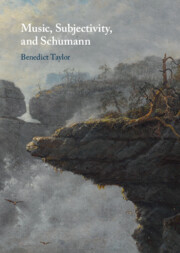Book contents
- Music, Subjectivity, and Schumann
- Music, Subjectivity, and Schumann
- Copyright page
- Contents
- Examples
- Acknowledgements
- Abbreviations
- Preamble
- Prosopopoeic Preliminaries
- Part I Hearing Subjects
- Part II Hearing Presence
- Part III Hearing Absence
- Part IV Hearing Others
- 8 Hearing Another’s Voice
- 9 Hearing Oneself as Another
- Epilogue
- Bibliography
- Index
9 - Hearing Oneself as Another
from Part IV - Hearing Others
Published online by Cambridge University Press: 07 April 2022
- Music, Subjectivity, and Schumann
- Music, Subjectivity, and Schumann
- Copyright page
- Contents
- Examples
- Acknowledgements
- Abbreviations
- Preamble
- Prosopopoeic Preliminaries
- Part I Hearing Subjects
- Part II Hearing Presence
- Part III Hearing Absence
- Part IV Hearing Others
- 8 Hearing Another’s Voice
- 9 Hearing Oneself as Another
- Epilogue
- Bibliography
- Index
Summary
A lack of self-recognition may point to psychological disorder and self-estrangement, and this chapter tackles the problematic notions of late style and madness in Schumann’s oeuvre. Still, misrecognition, mishearing, and their resulting subjective estrangement is wound throughout Schumann’s oeuvre, from the close of the Op. 35 Kerner cycle and the enigmatic piano miniature ‘Vogel als Prophet’ to the magical mirror scene from Genoveva; in extreme form it is manifested in the depiction of madness in the Andersen setting ‘Der Spielmann’. Most troublingly, the loss of musical self-recognition is epitomised autobiographically in the theme of the late Geistervariationen, with its reworking of an idea found in the slow movement of the Violin Concerto, but one which Schumann misattributed to the spirits of Schubert and Mendelssohn. Yet as I argue at the chapter’s close, the psychological state of the music’s virtual subjects often bear scant relation to anything that can be shown to apply to the actual biographical subject, Robert Schumann. In recognising signs of insanity in Schumann’s music, commentators are often only reading their own presuppositions into it.
- Type
- Chapter
- Information
- Music, Subjectivity, and Schumann , pp. 302 - 332Publisher: Cambridge University PressPrint publication year: 2022

